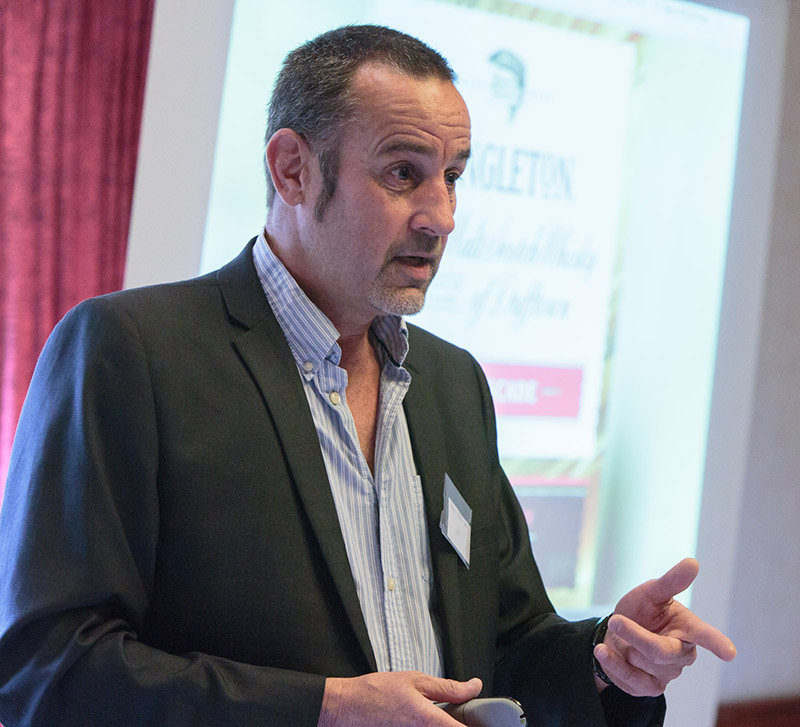Mark Robinson

Mark Robinson, Director of Lean at the University of St Andrews and Managing Director of St Andrews Lean Consulting Ltd, was the first breakfast speaker of the Autumn/Winter 2016 term at its September 21 meeting.
Mark Robinson, Director of Lean at the University of St Andrews and Managing Director of St Andrews Lean Consulting Ltd, was the first breakfast speaker of the Autumn/Winter 2016 term at its September 21 meeting.
Mark has delivered Lean facilitator training, facilitated Lean Rapid Improvement Events and led the establishment of Lean Teams in institutions including The Scottish Parliament and in a number of universities in the UK, Ghana and Malaysia to Canada and Australia.
A New Zealander, he explained to members and guests how his career prior to arriving in Scotland in late 2003 – in a number of management roles in the New Zealand public sector – provided many examples of processes which were far from effective or Lean and drove his desire to fix them and others.
For example, while working in education he encountered a form in a filing cabinet which had been transported without question from the original building to the new one a number of years before. It was from the 1940s and detailed the correct procedure for fitting headlight shrouds to a car during wartime. Or the time delay from filing a trademark application to receiving acknowledgement of its receipt – two years.
So, when asked in 2007 to join the University of St Andrews Lean change initiative, he jumped at the chance.
Mark explained the basic principles of the Lean approach to continuously improving organisational processes set out from Slide 14 in his presentation, which you can view here – https://prezi.com/097x0q2eadtn/st-andrews-business-club-21-september-2016/?utm_campaign=share&utm_medium=copy
In summary, Lean is about having “the right people continuously searching for the simplest and smoothest process in order to meet customer needs perfectly”. In order to achieve this, he and his colleagues have frontline staff map their existing processes in a blame-free environment of mutual trust and then generate ideas for how to move to a perfect set of processes which add value, are necessary and are free of the 8 Wastes (Slide 20) – Transportation, Inventory, Motion, Waiting, Over-production, Over-processing, Defects and Skills.
The 2 Fundamentals (Slide 18) – Continuous Improvement and Respect for People – and the Five Principles (Slide 19) underpin the approach and are used alongside a variety of tools and techniques, some of which are shown in Mark’s presentation. The Lean Project Process Overview is shown at Slide 29, with an example of a finished Lean process flowchart at Slide 31.
Potential obstacles include The Wall of Excuses (Slide 34). They are overcome through structured questioning from the Kipling Checklist (Slide 22).
For more information about Lean, continuous improvement and St Andrews Lean Consulting Ltd, go to its new website at www.standrewslean.com


